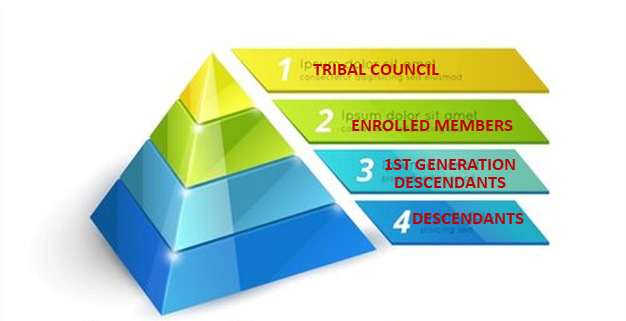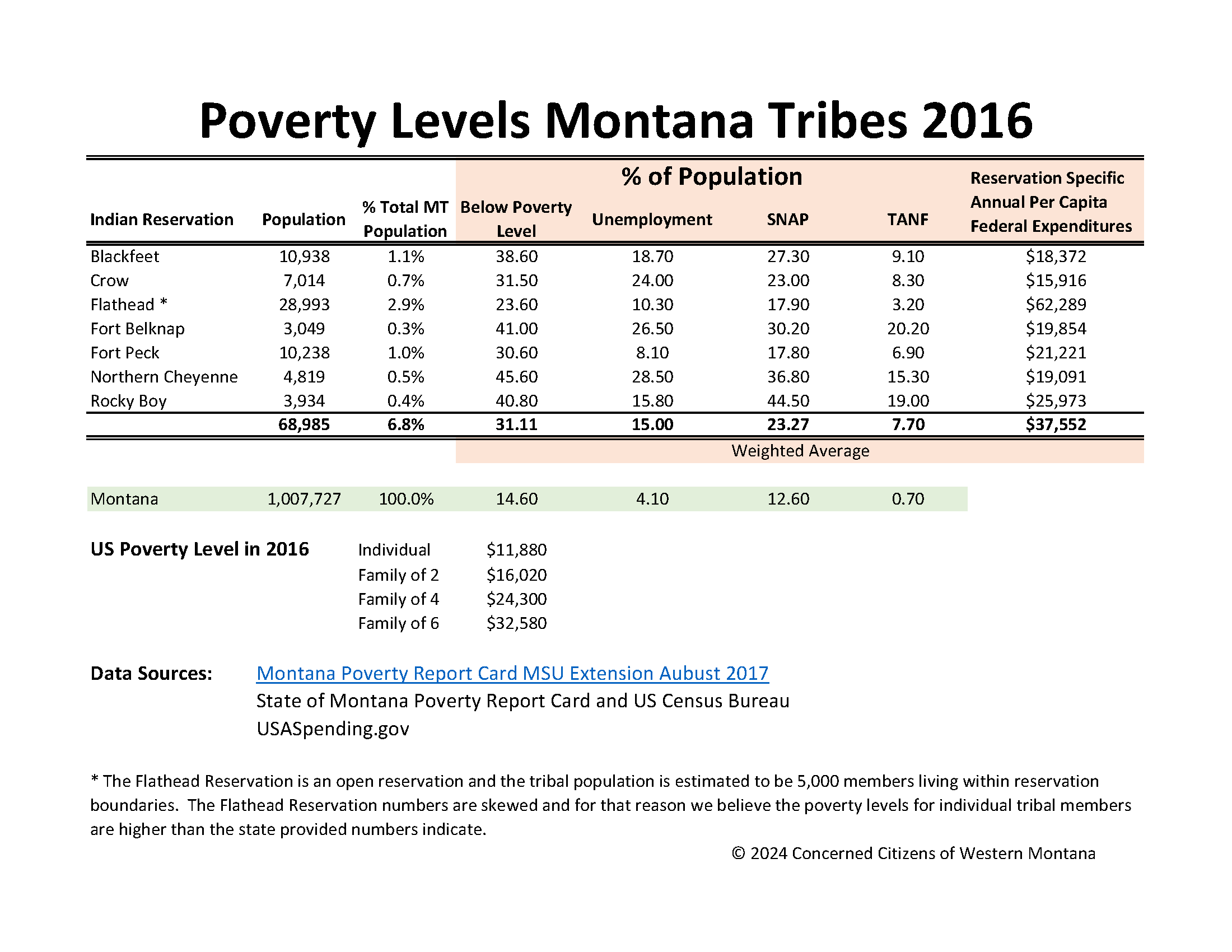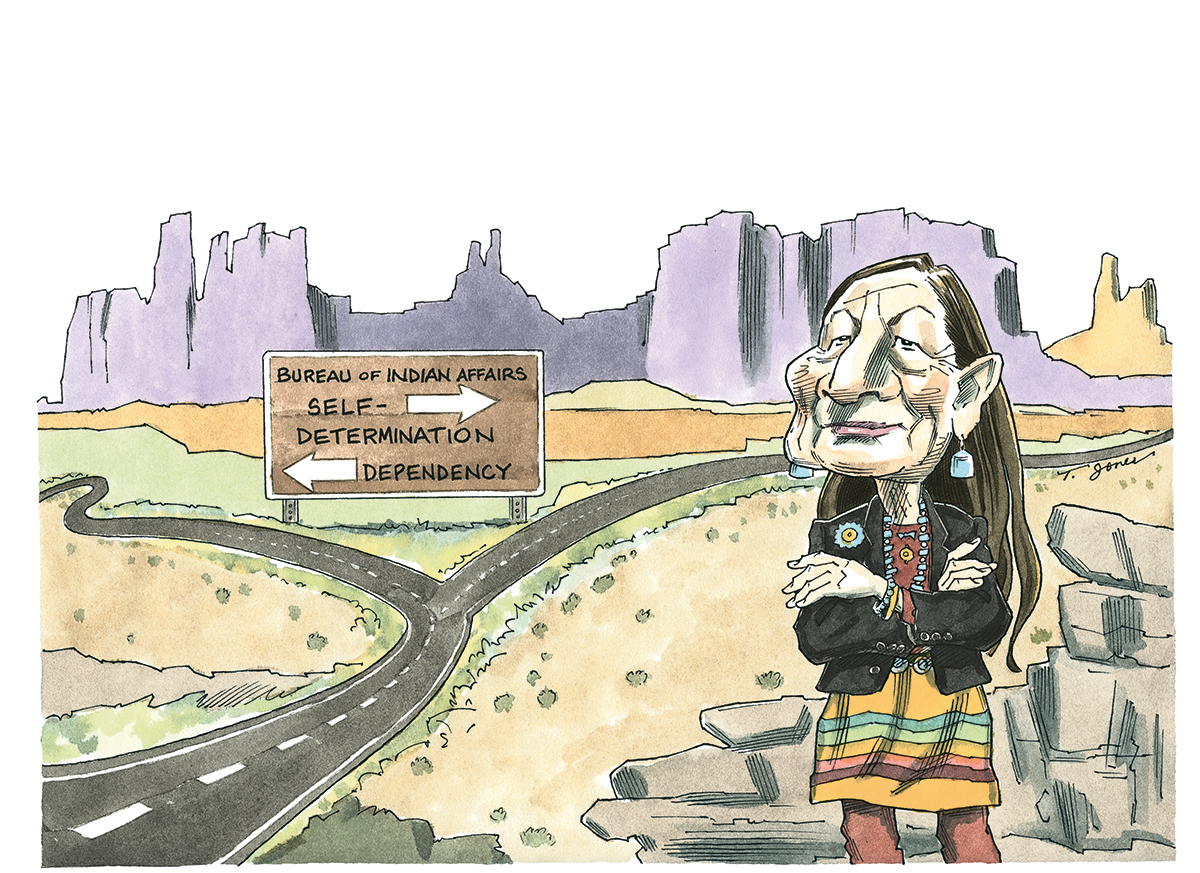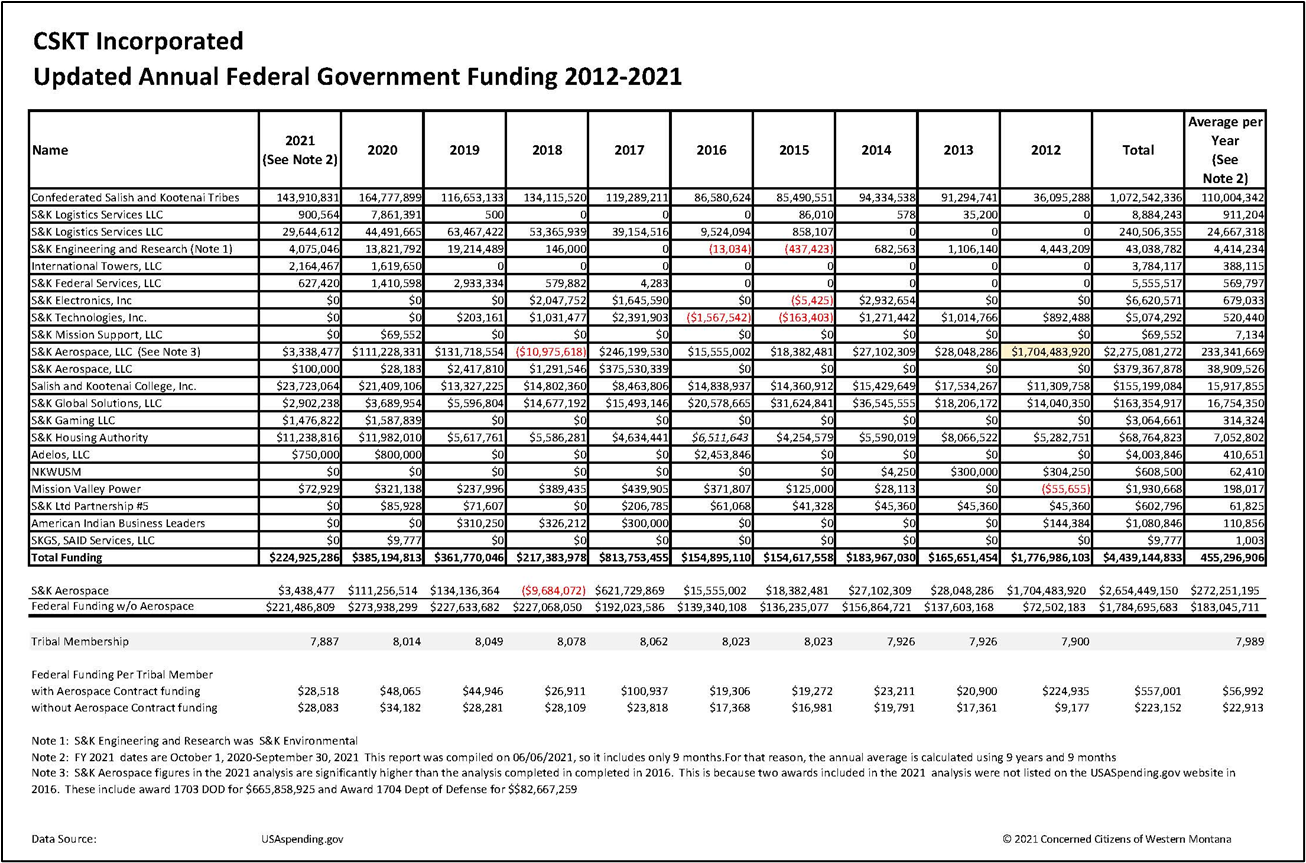© 2024 Concerned Citizens of Western Montana
Note: This is part 4, the last of a series on the Tribal Inheritance.
Thus far we’ve only discussed the monetary aspects of the tribal inheritance, but by far the most damaging outcome of federal Indian policy is the effect it has had on people, both Indian and non-Indian.
Federal Indian Policy has proven itself to be harmful in ways that we can not even begin to comprehend.
For starters, let’s look at the 25% blood quantum criteria used by the CSKT to determine who can and cannot be a “member.” At least since the 1950’s, a very large majority of the CSKT members are more non-Indian by blood than they are Indian.

In 1973, Ronan resident and attorney Lloyd Ingraham noted that the above (1970) “statistics suggest that if someone must compensate for the now alleged transgressions of ancestors, then all of the reservation population except the scant three percent who are of full blood are to some extent liable.”
In the 54 years since the 1970 census, the blood quantum numbers could only have been watered down even further.
It makes one wonder why there is any longer a need to continue to pretend that differences exist at all except to the extent of finding a way to clean up the mess that failed Federal Indian Policy has made of people’s lives, dreams and potential.
Such policy has served to enslave, demoralize and nearly destroy the very proud Indian people.
If the Flathead water compact is any indication, Indian policy is also well on its way to destroying non-Indians through control over the water they need.
Aside from the fact that this Indian / Non-Indian distinction keeps people divided, it also gives the government an avenue to exploit via money laundering, and hiding its destructive means and ends behind a shield of “tribal sovereignty.”
If the current blood quantum figures were available for public scrutiny today, it would further demonstrate that destructive Federal Indian Policy is built upon a failing blood quantum house of cards. It is just a matter of time before the system will collapse upon itself.

With that in mind, here are just a few of the human costs of Federal Indian Policy.
Member or Descendant?
Article II of the CSKT constitution and by-laws establishes the criteria for tribal membership:
Section 2. Present Membership. Membership in the Tribes on and after the date of the adoption of this amendment shall consist of all living persons whose names appear on the per capita roll of the Confederated Salish and Kootenai Tribes of the Flathead Reservation, Montana, as prepared for the per capita distribution as shown on the per capita roll paid in February 1959 together with all children of such members, born too late to be included on such per capita roll and prior to the effective date of this section who possess one–fourth (1/4) or more Salish or Kootenai Blood or both and are born to a member of the Confederated Tribes of the Flathead Indian Reservation. Subject to review by the Secretary of the Interior, the Tribal Council shall make any necessary corrections in this 1959 membership roll so that no one eligible for membership under prior constitutional provisions shall be excluded therefrom.
This policy creates a multi-tiered system of citizenship within the tribe.
Because of the tribe’s constitutional requirements for membership, many children of tribal members don’t have the blood quantum necessary for enrollment in the tribe. Such people are called descendants of tribal members, and as a matter of policy descendants are not subject to the benefits given to tribal members.

Descendants can be evicted from their home if it is located on federal trust land and their tribal member parent or spouse passes away. Descendants don’t qualify for tribal hiring preference, nor do they receive corporate dividends or other per capita payments. We are unsure if they receive any of the benefits of the health and social welfare programs that the federal government funds for the tribes.
The policies of the tribe have created a crisis of mixed families, where one tribal parent might be a member, the other parent a descendant and they can have tribal member children, or a mix of some tribal and also descendant children.
Tribal members must ask the tribal council for permission to allow their descendant child to assist in gathering of wood for personal use, or hunting on tribal lands. Such requests are often denied.
Tribal Council Minutes 10/07/2011: Wyman McDonald talked about improving the constitution. He has talked to councilmen about it and nothing has happened. They need to address the split family enrollment situation. It needs to be done in a fair and expedited manner. He is not talking descendant enrollment; he is talking split family. It is a very degrading issue having half the family enrolled and the other half being denied enrollment.
Mr. McDonald was right. We cannot imagine how degrading it must be to live your life designated as a descendant second class citizen if you will, even within your own family, and in the tribal caste system that federal Indian policy has created.
The last point we would like to make about members and descendant classifications is that all of the federal money awarded to the tribe is supposedly used to create “jobs” for the benefit of the Indian people. So many jobs in fact that there are not enough members with the qualifications and skillsets necessary to fill them.
Despite such shortages, the CSKT tribal preference hiring policy means that employers for tribal business enterprises must ask the tribal council for permission to hire a descendant, a member of another tribe, or heaven forbid, a non-Indian.
The Tribe is a “Sovereign” that’s not really Sovereign
The CSKT is a tribal government that says it is sovereign and self-determined but understands it isn’t:
Tribal Council Minutes 10/07/2011: Stephen Smallsalmon wants to know why the rules were changed in 1961 for enrollment.
Chairman Moran responded that it was amended in 1960. The amendment was changed to establish one-quarter degree blood for enrollment eligibility. It is up to the council to change it.
James Steele Jr. explained that it was a secretarial election to amend the constitution on membership. The membership voted on this. The amendment stated that an individual must possess at least one-quarter blood degree and be born to a member of the CSKT.
The document was written by the Department of Interior back in the 1930s and we were the first tribe to adopt the IRA constitution. He encourages the membership to read it.
Practically everything in the constitution requires review and approval of the Secretary of the Interior.
We cannot receive revenue from the fuels and cigarette tax from the state of Montana because we don’t tax our membership so our own state of Montana uses our constitution against us to not share that revenue with us.
We should consider reviewing the document to see if it needs to be amended. It was not written by us but the membership voted on it and passed it.
James encouraged the membership to read and know the treaty. He supports the effort to review the constitution and consider redistricting.
Mike Kenmille wonders how sovereign are we when every other paragraph says review and approval of the Secretary of Interior. We are not. It is disheartening. We could do a lot more if that paragraph was taken out of the constitution.
IS THIS WHAT THE UNITED STATES INTENDED WHEN IT CONFERRED THE ABILITY TO SELF-GOVERN UPON THE INDIANS WITH THE 1934 INDIAN REORGANIZATION ACT (IRA)? APPARENTLY THE ANSWER TO THAT QUESTION IS YES.
While the tribal government may privately admit they are not sovereign and can do little if anything without approval of the Secretary of Interior, they still are able to wield significant if not complete influence over the lives of its members, particularly those who choose to live within the boundaries of the reservation.
We also argue that the tribal government has used its federal corporate status to wield significant and overreaching negative influence and control over the lives of non-Indians within and outside of the presidentially opened Flathead Indian Reservation. The Flathead Water Compact and the effect it will have on all water users throughout western Montana is a striking example of this.
Tribal “Self-Determination” is Not Self-Determination. It is Money Laundering.
The CSKT tribal government has oversight of what has now become vast amounts of money that the United States awards each year for self-government and self-determination “contracts” and welfare programs. However federal strings tied to such money more often than not require Secretary of Interior approval of tribal business dealings and transactions.
This funding has proven to be of little help to the circumstances of the tribal membership, and instead, neither the tribal government or its membership are self-determined.
See: The Cancer of Government Deemed Self-Determination
Today the tribal membership is worse off financially than they were in 1954, and despite hundreds of millions of federal dollars that flow through the tribe’s treasury each year, true self-determination is out of the reach of the tribal council and most of its members and descendants.
Here is just one very complicated example:
Tribal Council Minutes 10/11/2011: (Tribal Member); and Allen Sloan, Salish Kootenai Housing Authority; followed up on (Tribal Member’s) issues with Housing. (Tribal Member) said he still has the same problem and has been trying to work it out with Housing without having to go to court. He was told that Ranald McDonald is supposed to be assisting in this matter. He was being evicted from a homesite in Schley and received a homesite next to his mother. He was told by Tribal Lands that his trailer was unsuitable and they deemed it unlivable. (Tribal Member) approached council and they suggested he go to Housing for assistance. Housing told him they purchased several trailers from the Trailer Court and if he wanted one the Flathead Finance Program would assist him. The trailers were trashed that he looked at. Housing offered to sell it to him for $9,740. It needed a considerable amount of work. Housing said it was appraised for that amount and that is what they were selling it for. (Tribal Member) is here to settle this without going to court. The trailer needed a lot of work and he was told Housing could not do all the work. In the meantime he looked at a different trailer and found one. He had it moved down to his lease lot. When he signed the papers he thought he was signing for the trailer, but he was told he signed his lease lot up for the trailer. (Redacted) told him it is not about the trailer; it is about the lease lot. He put in for weatherization and was told his papers could not be found; then was told to fill them out again. After that he was told they couldn’t be found again. He was refused weatherization services and his pipes froze. Jim Malatare thawed them out and assisted him. He had massive damage to his kitchen, hallway and bathroom due to the pipes freezing. He told Housing about this and was told they could not do anything about it since their program did not cover the floors. They gave him a list of things that would be done to the trailer. They did not fix the mold from the water damage. He requested someone from outside of Housing to do the final inspection when the improvements were done by Housing. Housing said they put in insulation in the attic of the mobile home. When the inspector picked up the file Willie whited out things that appeared in (Tribal Member)’s file. (Tribal Member) had Jim Taylor assist him when he worked in the Tribal Defenders Office. Jim sent a letter to Housing stating that the work was not completed to (Tribal Member)’s trailer. Now (Tribal Member) is faced with the possibility of losing his land. Ann Sherwood, Tribal Defenders Office, visited with (Tribal Member). She was hoping to negotiate an amount on the payback due to the damage. She met with Ranald and (Tribal Member). Ranald was going to follow up with Housing and see what (Tribal Member) could afford to pay on the mortgage so he would not lose his land. Housing filed suit against (Tribal Member) on the unpaid mortgage. Bud Moran advised that Housing needs council authority to take a lease lot. The suit against (Tribal Member) should not have included the lease lot. Ann got an agreement to stay the proceedings for 20 days to see if an agreement can be reached. Jim Malatare commented that (Tribal Member) takes really good care of his home and he hopes something can be worked out to assist (Tribal Member). Mike Kenmille said when council last spoke to (Tribal Member) he requested clarification since there was no threat to his current home or homesite.
Examples like this can be found throughout the tribe’s minutes. Policies such as these keep people in debt to their government and demonstrates yet one more human cost of the federal Indian Policy.
This example appears to be part of a common theme, and is a direct result of the IRA and the tribal government that exists today.
Is the Tribal Inheritance a Façade?
 Click on the photo above for a PDF of this chart.
Click on the photo above for a PDF of this chart.
We say that to a large extent it probably is. Perhaps one could reasonably say that rather than an equal interest in the tribal assets, the tribal members have instead inherited all of the problems that communism brings, such as:
- Government owned property and businesses
- There is little motive or incentive for workers
- There is no freedom of speech
- An abusive government
- Opposition is not allowed
- Instead of providing wealth, communism often causes poverty.
- Even if you so desire, you cannot save or own wealth in a communist system. It is not allowed.
In the grand scheme of things the tribal membership may be well past any possibility of termination of the treaty with the hope of a liquidation and distribution of the tribe’s assets.
That can only happen if the tribes’ members proactively choose to assert, and are able to access its right to such assets during their lifetime.
Even then it is highly likely that the display of wealth put on by the tribal government with fancy buildings and such may not be all that it appears. It’s possible that much of the tribes’ “wealth” has been squandered via its shell corporations, as well as cadres of attorneys and lobbyists used to garner even more control over non-suspecting people. If there is a tribal reserve fund as provided in the corporate charter, it remains hidden from view. There is no way of knowing for certain what tribal assets are worth, or whether they have been hidden away.
In 1954, the tribal members fully expected to receive an equal share from the liquidation of the tribes assets. That is what the tribal inheritance meant to them.
Most importantly, they wanted to be freed from the chains of Federal Indian Policy and to accept the privileges and responsibilities of American citizenship.
In 2024, the tribal members are told that the inheritance should be preserved and protected so that it can be passed down to future generations. Such a tact is little more than a psychological manipulation of the tribal membership to keep them from asserting their rights.
Unless a tribal member owns private fee land, they have little if anything to pass down to their children or family members.
We argue that the human cost of Federal Indian Policy has been far greater than people realize, or would like to admit. Such policy serves only for the benefit of the federal and tribal government to the detriment of the people they supposedly represent.
In REALITY, the tribe’s questionable acceptance into the Indian Reorganization Act Club (per tribal members at the time, the vote was fraudulent) ensured that the CSKT tribal inheritance will remain with the federal and tribal government for generations to come while the membership becomes poorer and less capable, or desirous of self-determination.

Photo Source: Hoover Institution Article by Terry Anderson March 2021
See Also:
- The Tribal Inheritance Part One
- The Tribal Inheritance Part Two Vested Rights in the Tribal Estate
- The Trial Inheritance Part Three: Corporate Dividends
Follow Our Blog
If you’d like to receive email notifications when we post something on the blog here’s how to do it:
To Follow the Blog: While on any page of the blog, you will see a list of recent blog posts on the left side of the page. Scroll down to just below the articles and you will see a section that says:
Follow Western Montana Water Rights.
It should give you a choice to sign into wordpress or to allow you to enter your email address to follow the blog and receive notifications of new posts by email.
Simply enter your email address in the box provided and click the button that says FOLLOW.


Pingback: The Tribal Inheritance Part 1 | Western Montana Water Rights
Pingback: The Tribal Inheritance Part 2: Vested Rights in the Tribal Estate | Western Montana Water Rights
Pingback: The Tribal Inheritance Part 3: Corporate Dividends | Western Montana Water Rights
Pingback: No One Dares Tell the CSKT What They Can or Can’t Do | Western Montana Water Rights